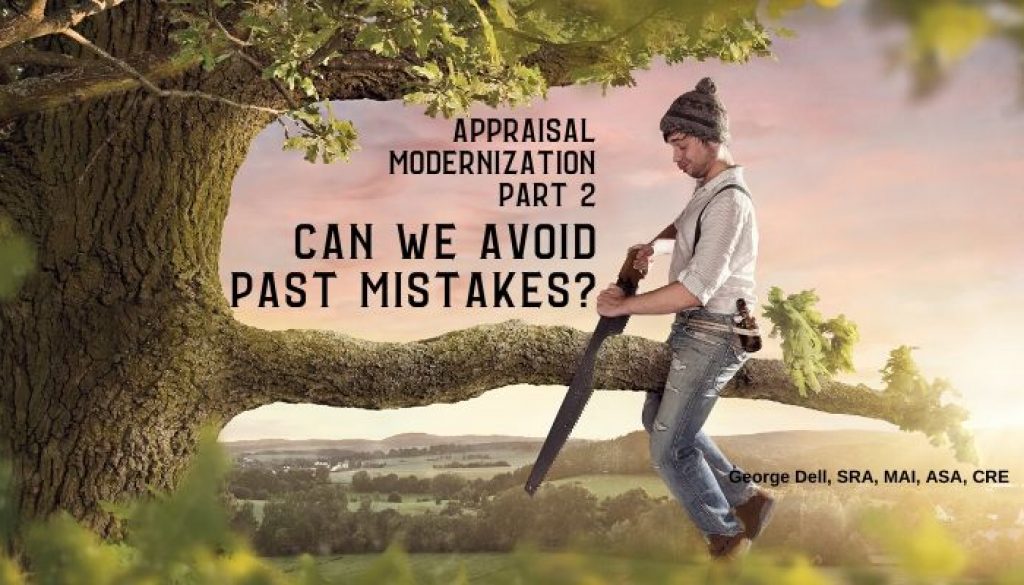Can We Avoid Past Mistakes?
Avoiding past mistakes might be important to appraisal modernization. [Part 2 of a multi-part series on Appraisal Modernization.]
As we suggested in other publications (The Asset Analyst Report) there is a process to deal with change. The first step is to identify the problem, (or failed solution, such as the residential 1004MC). The second step is a willingness to move towards the ideal. The third step is the decision to move in that direction.
In other words, don’t try to fix the past. Select the best future first.
STEP 1
The 1004MC was an attempt to force appraisers to provide more market analysis, and identify price trends. The goal was admirable: Identify the relevant market, and “support” a market conditions adjustment. There were several problems with the 1004MC. (For peer-reviewed academic critique, please see my journal articles in The Appraisal Journal.)
- The important distinction between ‘neighborhood’ and ‘market’ is muddied, and even contradicts the appraiser’s instructions. (A neighborhood trend may or may not represent the subject’s relevant market segment.)
- The wrong ‘statistical’ method is required: (continuous data is treated as grouped data).
- Visual representation (if applied) confuses, rather than clarifies – using irregular groupings of 6, 3, and 3 months.
- The result is mathematically wrong. The trend indication shows the wrong direction at the worst possible times (market tops and market bottoms), due to the information loss from #2 above.
- The client-required analytic method effectively conflicts and contradicts the required appraiser’s certification. If followed, the 1004MC result creates a false value conclusion, due to the false trend analysis. It is biased due to the client’s requirement to develop and report predetermined results, and a stipulated (and ambiguous) result regarding the market trend time adjustment.
- The time period is arbitrary at 12 months. Each subject and each market segment is different. A fixed market exposure assumption may or may not be the most relevant. It may or may not relate to the time period from which sale information translates into 3 or 6 comparables.
STEP 2
Willingness to effect change may be simple. However, it is important to understand the difficulties with trying to change anything! It is necessary to recognize the unwillingness and resistance to change which may come from any stakeholder or other vested interest. (Or simply human and organizational inertia.)
Another part of the willingness step, it is important that the ideal solution will seldom come from past expertise and past principles and past approaches. Today’s asset/risk assessment problem is different from that of the past. The data disruption is here and now.
My education is vastly in economics. Econometrics is the measurement of economic things – utilizing economic theory, mathematics, and the science of data. Specifically, asset econometrics. Valuation is a subset of econometrics. This willingness step, for real, is the hardest step. It is the hardest because the old thinking is embedded in our education, standards, regulations, training, habits, and even unconscious defense of past beliefs.
STEP 3
Once the problem has been identified, and there is motivation to change, the decision step is easy. I suggest that we as a profession and our clients decide. At each step of the modernization, let’s check against our true goals. Are we on the path? Will the current revision lead us toward the ideal?
This step is not easy. Yet necessary. It is necessary for us, for our mission, and for the public trust.
